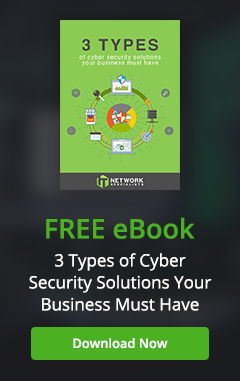The Android operating system (OS) relies on an open-source code that allows users and manufacturers to modify their phones’ or tablets’ OSs. The problem is, Android’s open-sourced nature also makes it susceptible to cyberthreats. Recently, security experts found DEFENSOR ID — a new type of Android malware exploiting the system's Accessibility Services.
Researchers uncover new strain of Android malware
Secure your business printers to avoid getting hacked
To achieve foolproof cybersecurity, you must make sure that every endpoint is protected from threats. That means securing every network, every server, every computer — and every printer. Because they’re easily overlooked, print devices can be exploited by hackers and used as an entry point to steal or modify data.
Buying antivirus software? Consider the following points
You probably didn’t need to worry about antivirus protection before. At the office, the IT department handled it. At home, your personal setup may not contain enough valuable information to warrant industry-strength. But because of the global pandemic forcing most of us to stay indoors, your home is now your office, too.
Cybersecurity tips for working remotely
Remote work policies have become a necessity not just because of the current coronavirus crisis, but also for the ways they improve a company’s bottom line and efficiency. Yet despite remote work’s benefits, it leaves you and your company exposed to online scams and other cybersecurity threats.
The risks of autocomplete passwords
Hackers may have found another way of tracking you via seemingly harmless autocomplete passwords. Here’s what you need to know.
Why auto-fill passwords are so dangerous
Certain web browsers have integrated features that enable usernames and passwords to be automatically entered into a web form.
Hackers come in all shapes and sizes
Hackers are known by the general public as cybercriminals, especially with so much news about nude celebrity photos beings released to the cloud, millions of customer information being stolen across many industries, and government agencies paying the ransoms hackers demand so that the former can regain access and control of their systems.
Office 365 hacking: What you need to know
With over 150 million active subscribers, Office 365 is, unsurprisingly, on top of hackers’ minds. And now, hackers are using a technique that doesn’t even require users to give up their credentials. Learn how they do it and get protected.
A phishing scam that harvests users’ credentials
The latest cyberattack on Microsoft Office 365 involves harvesting users’ credentials.
Cybersecurity: How to defend against insider threats
In the cybersecurity world, an insider threat is an individual or business partner who uses company data inappropriately. Today's companies must take proactive steps to prevent insider threats, which is why we put together some tips and tricks.
#1 Educate
You must teach your team to recognize personally identifiable information (PII) and understand the financial implications of a breach.
Some ransomware strains are free to decrypt
Over the last few years, different versions of ransomware have sprung up, all aimed at extorting money from your business. Before you even consider paying for the release of your data, the first thing you must always check is if there's a free cure for the ransomware that infected your systems.
Cybersecurity for small- and medium-sized businesses
Has your organization been hit with a data breach or ransomware recently? This happens more often than you might think to businesses of all sizes. Given the frequency, complexity, and increasing number of threats, a multi-level, agile, and cutting-edge cybersecurity strategy is the only response that will protect businesses from massive losses.

